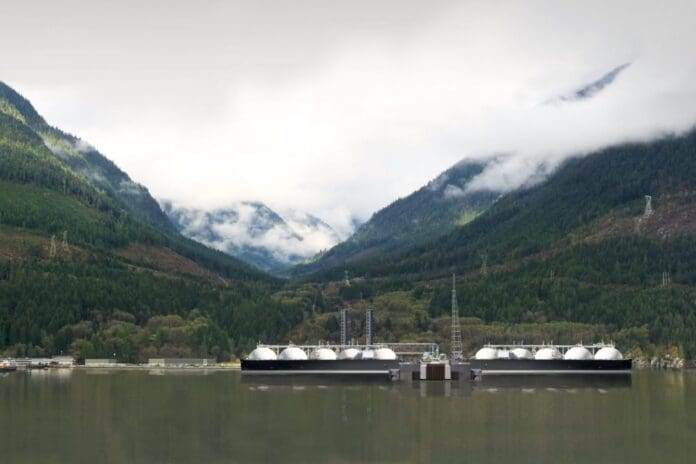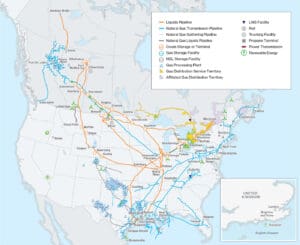
On July 29, Enbridge Inc. (Enbridge) announced that it made a deal with Pacific Energy Corporation Limited (Pacific Energy) to buy a 30% stake in Woodfibre LNG, a liquefaction facility that is being developed near Squamish, British Columbia, Canada. The project is valued at roughly US$4 billion. Pacific Energy will retain a 70% stake in the facility. “This partnership is a milestone for the Woodfibre LNG project,” said Ratnesh Bedi, president of Pacific Energy. “It further accelerates Canada’s ability to be a meaningful player in the global energy transition with the production of the world’s lowest-carbon liquefied natural gas [LNG].”
Enbridge claims that the facility will be one of the cleanest in North America because it is being powered by renewable hydroelectricity produced from the British Columbia grid. The renewable hydroelectricity will power electric motor drives. The decision fits into Enbridge’s long-term goal to be carbon neutral by 2050. Enbridge has also been making efforts to better serve all of its stakeholders, including indigenous populations, the communities its infrastructure affects, and its customers. Woodfibre LNG is unique in that it is the only project in Canada that has received a non-treaty Indigenous-issued environmental assessment certificate, the first project approved under the Government of Canada’s Five Principles for environmental assessment, and has received all major federal, provincial, and First Nations approvals.

Construction is expected to commence in 2023. The plan is for Woodfibre LNG and Pacific Canbriam to supply LNG produced in British Columbia, cool and condense it at the Woodfibre LNG facility, and then sell it to BP, which will export it for sale around the world. Squamish Nation is serving as a project partner and environmental regulator. Woodfibre LNG issued a Notice to Proceed to McDermott International in April. The project has a forecasted in-service date of 2027.
Plans are in the works to expand Fortis BC Energy Vancouver Island Inc. (FortisBC Energy’s) Eagle Mountain Woodfibre gas pipeline, which will connect FortisBC’s system through Woodfibre and then along to Enbridge’s T-South natural gas transmission system. The 29-mile (47-km), 24-in. (610-mm) natural gas pipeline will travel from the Coquitlam Watershed in the Greater Vancouver Regional District to the Woodfibre LNG facility. According to the project’s environmental assessment decision, the pipeline will require additional compression at the existing Eagle Mountain Compressor Station in Coquitlam, a new compressor station in Squamish, and metering facilities at the receipt and delivery points.

“This facility will provide global LNG markets with a safe, secure, and sustainable source of British Columbia natural gas through a long-term transportation agreement on our T-South pipeline system. This investment is a natural extension of our export pipeline strategy, with strong commercial underpinnings. Expanding global access to natural gas through LNG will play a critical role in North America’s energy future and will help to reduce the world’s greenhouse gas emissions through the displacement of coal-fired power generation, creating strong alignment with our environmental, social, and governance [ESG] goals,” said Al Monaco, Enbridge’s president and CEO.
The facility’s capacity is expected to be 2.1 MTPA with 8.8 MMscf (250,000 m3) of offshore floating storage capacity located near Squamish, British Columbia. BP will serve as the main buyer of the LNG. BP Gas Marketing Limited has secured two 15-year offtake agreements for 70% of the facility’s capacity but has additional commitments that would give it up to 90% of the facility’s LNG export capacity.
















